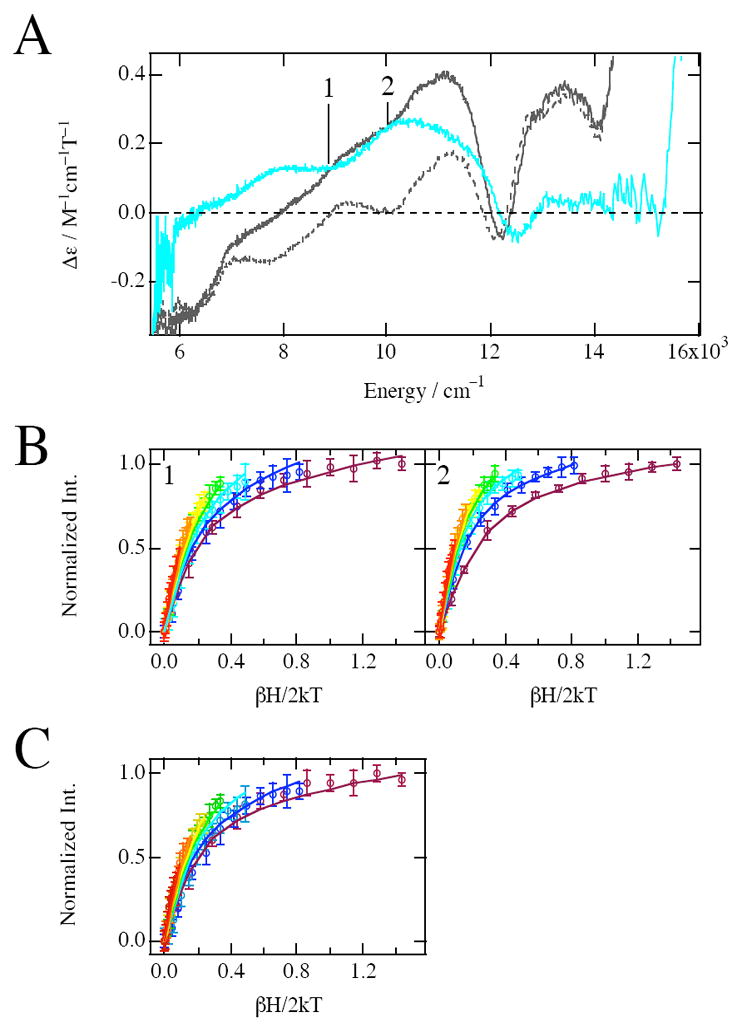Figure 5.

Ligand field MCD and VTVH MCD data for naphthalene-bound NDO with reduced Rieske. (A) MCD spectra at 5K and 7T of naphthalene-bound NDO with reduced Rieske; FeNDOred-Naph (gray line), apoNDOred-Naph (gray dashed line), and the difference (FeNDOred-Naph − apoNDOred-Naph) (aqua line) spectra. (B) VTVH saturation magnetization behavior of naphthalene-bound NDO with reduced Rieske measured at 8890 cm−1 (1) and 10010 cm−1 (2). The normalized data are plotted vs βH/2kT for a series of fixed temperatures (1,7, 3, 5, 7, 10, 15, 25K). The temperature of isotherm curves increases as the color of curves changes from purple to red in the spectral color order. Errors in the intensities are also shown by error bars. The best fit (solid lines) to the data was generated by the parameters described in Table 1. (C) Corrected VTVH saturation magnetization behavior of naphthalene-bound NDO with reduced Rieske obtained by subtraction of 35% of the intensities of normalized VTVH MCD data calculated at 10010 cm-1 from the normalized VTVH MCD intensities experimentally obtained at 8890cm-1. The normalized data are plotted vs βH/2kT for a series of fixed temperatures (1,7, 3, 5, 7, 10, 15, 25K). The temperature of isotherm curves increases as the color of curves changes from purple to red in the spectral color order. Errors in the intensities are also shown by error bars. The best fit (solid lines) to the data was generated by the parameters described in Table 1.
